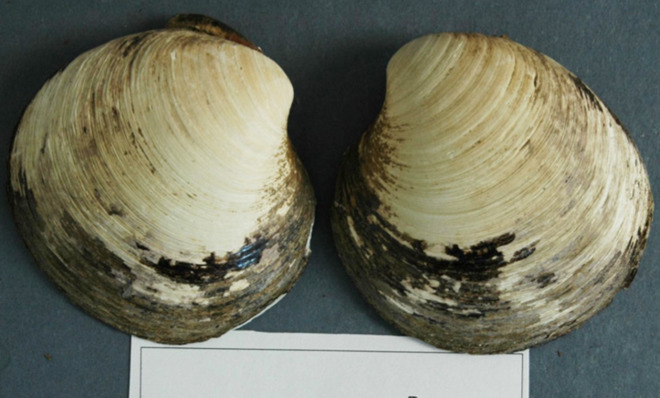Meet Ming: The world's oldest creature that scientists just accidentally killed
Oops.
In 2006, a team of oceanic researchers from Bangor University in North Wales stumbled upon a nondescript clam off the frigid coastal waters of Iceland. It was just one of 200 specimens collected.
Their original goal was to study climate change's effects on the local ecosystem, and since clams can live for very long periods of time, their calcified shells can provide an incisive historical account on how the surrounding environment has changed over the decades.
Only this clam was, well, a bit special: Initial analysis suggested it to be the oldest living quahog ever discovered by academics, who estimated it to be somewhere between 405- and 410-years-old — so, hatched around the time when Shakespeare was putting the finishing touches on Hamlet. Calculating a clam's age is pretty straightforward. Like counting the rings on a fallen tree, you simply count the growth rings on the hinge of its shell.
The Week
Escape your echo chamber. Get the facts behind the news, plus analysis from multiple perspectives.

Sign up for The Week's Free Newsletters
From our morning news briefing to a weekly Good News Newsletter, get the best of The Week delivered directly to your inbox.
From our morning news briefing to a weekly Good News Newsletter, get the best of The Week delivered directly to your inbox.
Only calculating the exact age of Ming — named after the famous Chinese dynasty it was thought to be alive during — proved to be a bit more complicated than that. The mollusk turned out to be so old that its growth rings were impossible to count accurately, with roughly 500 crammed together into a space of just a few millimeters.
So, in efforts to get a clearer reading of Ming's age, researchers decided to do what they've always done: They opened it up.
And — surprise! — the clam turned out to be far older than originally suspected: Ming turned out to have lived on Earth for 507 years, making it the oldest living creature on record.
Only the "living" part didn't last long. Now perhaps it was simply too old to handle having its shell opened — being born in 1499 will do that to you — or perhaps it was roughed up a bit, but Ming, unfortunately, died shortly thereafter.
A free daily email with the biggest news stories of the day – and the best features from TheWeek.com
Oops is right.
Now to be fair, there was no way for the scientists to know it would end up being the oldest animal on record without prying it open. And the animal's sudden and unexpected trip to clammy heaven wasn't exactly a once-in-a-lifetime event:
"It's worth keeping in mind that we caught a total of 200 ocean quahogs on our Iceland expedition," [researcher Paul Butler] told Science Nordic. "Thousands of ocean quahogs are caught commercially every year, so it is entirely likely that some fishermen may have caught quahogs that are as old as or even older than the one we caught." [The Belfast Telegraph]
So, the next time you twist a fork into a plate of seafood fettucine alfredo, remember that there's a very real possibility that the sea creature you're enjoying may, in fact, be a few centuries old.
-
 Are pesticides making florists sick?
Are pesticides making florists sick?Under the Radar Shop-bought bouquets hide a cocktail of chemicals
-
 Will Trump’s 10% credit card rate limit actually help consumers?
Will Trump’s 10% credit card rate limit actually help consumers?Today's Big Question Banks say they would pull back on credit
-
 3 smart financial habits to incorporate in 2026
3 smart financial habits to incorporate in 2026the explainer Make your money work for you, instead of the other way around
